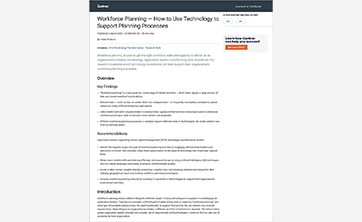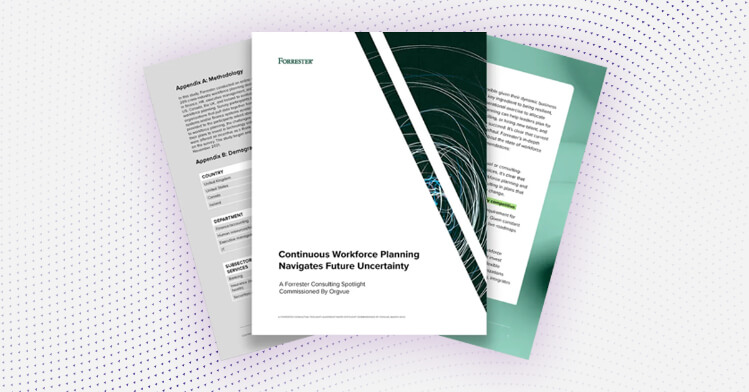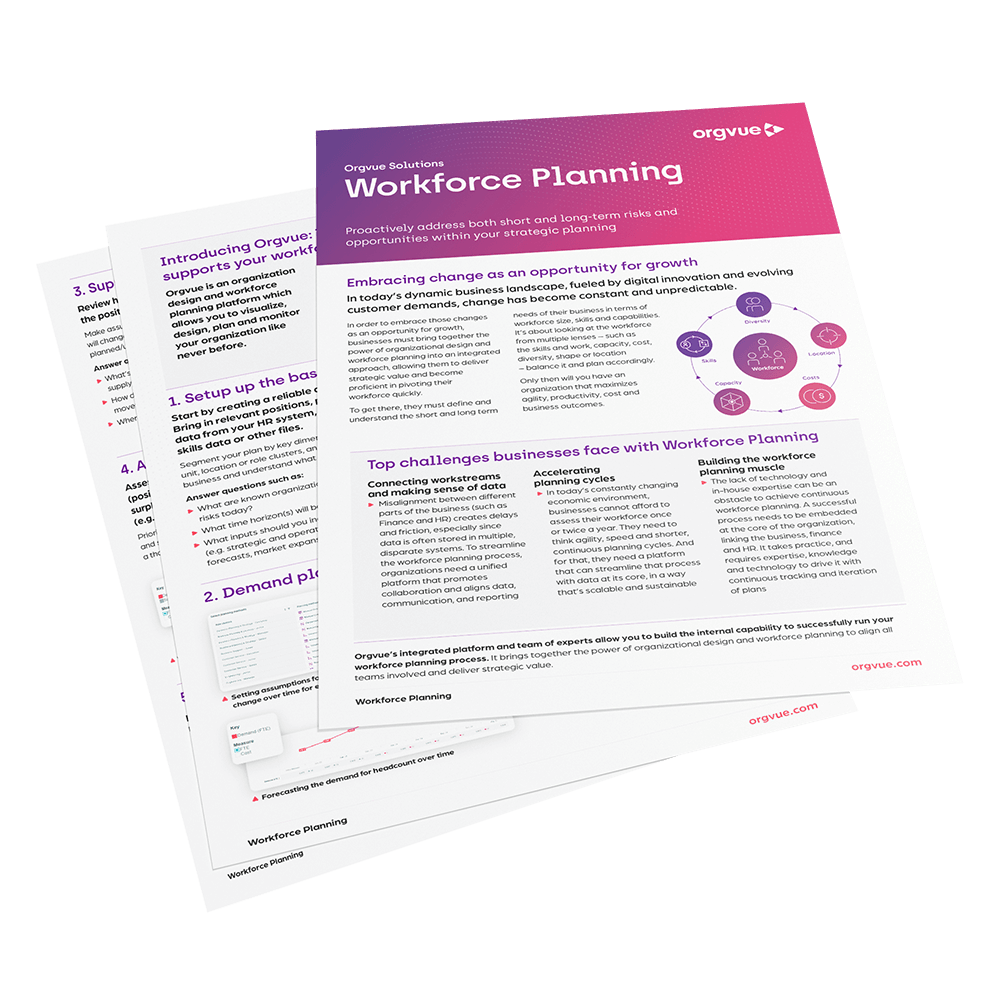
We noticed that you were redirected here from the Dynaplan website Dynaplan has recently become part of Orgvue. Click Login to access your Dynaplan account.
Why now?
Digital disruption. Customer expectations. Market shifts. Competition. The great resignation. Skills gap… the list of change drivers is long.
For today’s organizations, change is constant and unpredictable, and changing your business means changing the workforce to suit. The time has come for businesses to link their workforce to their business strategy. To think resilience, agility, and shorter planning cycles. In other words, to think continuous workforce planning.
In this ebook, we unpack some of the practicalities of adopting continuous workforce planning and shortening your planning cycles. We’ll set out the steps to a faster, data-driven workforce planning process that will position your organization to respond quickly to uncertainty and change.

What is workforce planning?
Workforce planning is the process of identifying what an organization is going to need in terms of workforce skills, capability and cost to achieve its objective, and planning for that in both the short and long term. It connects strategy to people, and enables different teams to work together towards a common vision.

Benefits of workforce planning
Effective workforce planning drives productivity
Studies have shown that effective workforce planning can double productivity. But what exactly do we mean by ‘effective workforce planning’ and what does it include?
- A process that aligns the deployment of your workforce to deliver strategic business goals
- A planning baseline that segments the workforce into key organizational dimensions and understands current cost and headcount
- The ability to instantly identify gaps between workforce supply and demand over time
- The ability to model and assign the right people with the right skills to appropriate work
- Continuous monitoring of progress against both the workforce and business plan, and the ability to course correct as things change
Why Orgvue?
Orgvue provides the technology foundation you need to align your workforce capacity, capability and cost to your strategy. How? By bringing together strategic workforce planning, operational workforce planning and organizational design in one continuous planning cycle.

Strategy to people
A single technology that brings together the planning needs of Finance, HR and the business

Data visibility
Overcome data challenges by creating a single source of truth to track baseline, actuals and plan at scale

Business alignment
Align your team efforts to a common vision

Secure collaboration
Minimize risk with a safe environment to model, plan, and consolidate efforts

Business agility
Today’s market is unpredictable. Adopt shorter planning cycles and the ability to pivot when needed
Find out more about Orgvue’s workforce planning software
Solution brief
Workforce planning
Read the solution brief to learn how Orgvue can help you to align your workforce to your organization’s goals with continuous workforce planning.
- Common challenges to overcome with continuous workforce planning
- 4 steps to continuous workforce planning
- A SaaS platform that changes everything
- A customer case study
Workforce planning self assessment
In only one minute see your company’s capability compared with our industry benchmark in your free report with hints, tips, and recommended next steps.
Workforce planning resources








Book your free demo
Design your business of tomorrow, today. Discover what Orgvue can do for your organization first-hand.
